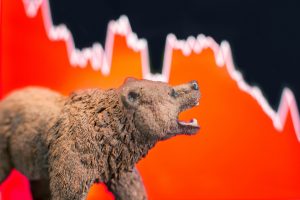US Equity Market Crashes below 2007 Highs Despite Massive Surge on Trump Stimulus Plan
The comments below are an edited and abridged synopsis of an article by Tyler Durden
Friday, March 13, 2020 saw the biggest spike in US equities since October 2008 after an avalanche of intervention across the world, and extended by 1,600 points as President Trump unveiled his stimulus/testing plan.

The last time the market rallied that much was on October 28, 2008—the day TARP was announced. However, the S&P fell 35% further after that bounce.
But, overall, the market just suffered its fastest, most aggressive collapse into a bear market ever. Even more ominous, the broadest measure of the US equity market—the NYSE Composite Index—has collapsed below its 2007 highs (despite trillions in added liquidity).
Last week was the market’s worst since October 2008. Small caps’ 20% crash was the worst since 1987; European stocks were hit hard; Chinese stocks sold off; banks were battered; the VIX term structure collapsed to its most inverted since 2008; investment-grade credit crashed; HY credit risk exploded; stocks and bonds were dumped; risk parity funds saw the biggest deleveraging losses ever; bonds suffered a bloodbath; 30-year yields exploded higher before tumbling. Most worrying: The bond ETF world started to break as massive discounts occurred in Treasury, muni and HY credit ETFs, exposing the illiquidity of the underlying assets. The US dollar was massively bid as safe-haven flows and liquidity demands sparked a sell-everything-else trade worldwide. Bitcoin was down over 50%, crashing $4,000 intraday. Gold, silver and palladium also suffered. It was the worst weekly loss for a diversified book of bonds and stocks since 2008.
If you’re wondering where this ends, it’s simple: below 2,000 for the S&P 500, as the last five years of equity market gains have been a total delusion.
And if you thought the Fed’s trillion-dollar-plus care package helped… it didn’t. The FRA-OIS spreads continued to blow out, strongly suggesting massive dollar shortages and/or fear of systemic bank credit risks.
